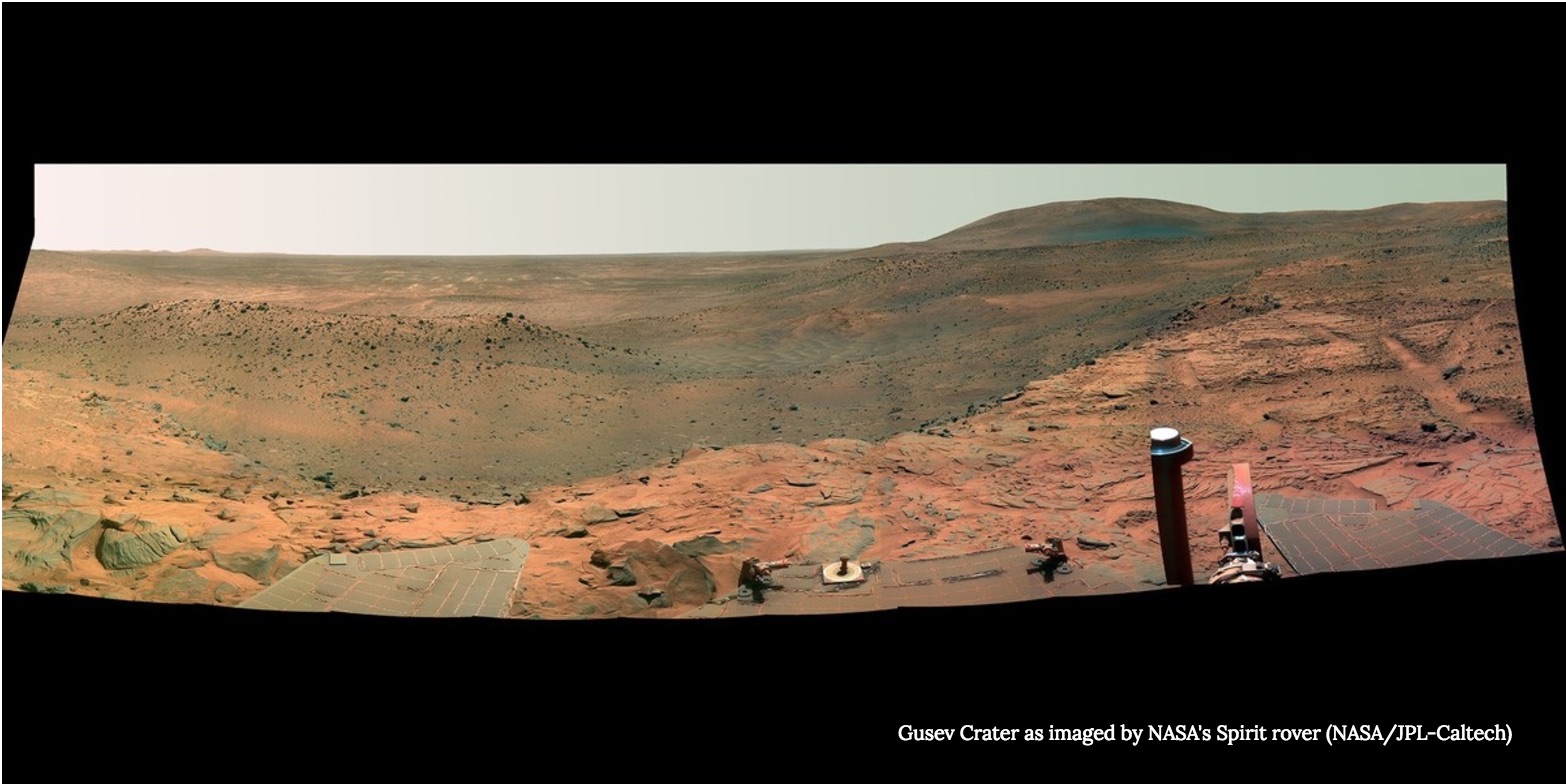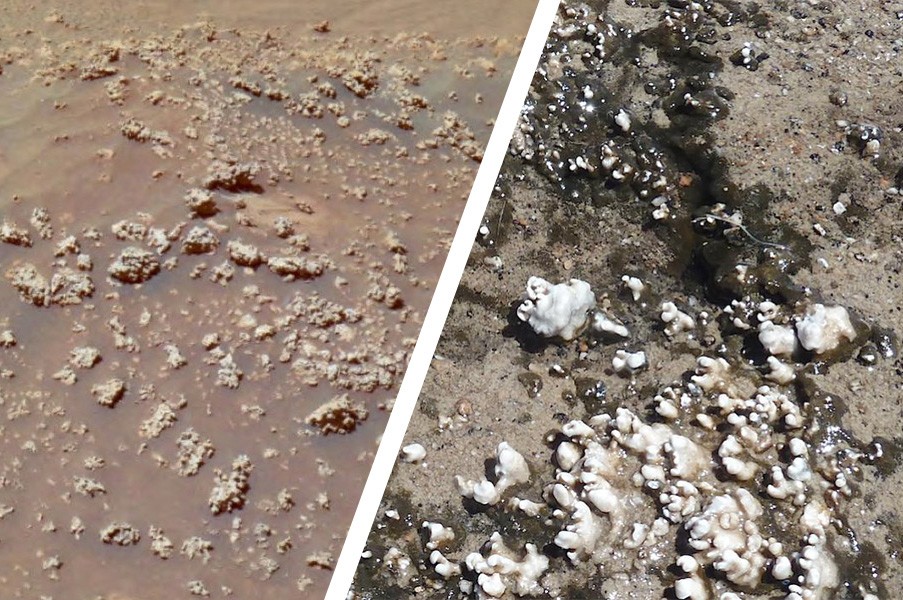To Find Life on Mars, Perhaps We Should Look Here

Did NASA's now dead Spirit rover find evidence of life on Mars before it got stuck in a sand trap and confirmed lost by NASA in 2010? Possibly, say two geoscientists who have found a location on Earth shaped by microbes that closely resembles a particular area on Mars that was scrutinized by the rover in 2007.
The focus is a curious cluster of finger-like silica nodules that were imaged by Spirit near the so-called "Home Plate" area in Columbia Hills in Gusev Crater in April 2007. The rover operated in the location for over five years, studying the Martian geology and atmospheric phenomena. Spirit's sister rover, Opportunity, continues to explore the Red Planet nearly 13 years after landing.
Steve Ruff and Jack Farmer of the Arizona State University's School of Earth and Space Exploration have drawn comparisons with the Home Plate structures with formations at a Chilean hot springs called El Tatio, where microbes are known to influence the structure of silica deposits. Their findings have been published in the journal Nature Communications.
The Atacama Desert is often referred to as one of the best "Mars analog" locations on Earth. The hot springs of El Tatio is located at an altitude of over 14,000 feet (4200 meters), making it one of the highest hydrothermal locations on Earth. At these altitudes, the atmosphere is thinner, so the location receives an intense influx of ultraviolet light and is often subject to freezing temperatures even in the summer. These characteristics make El Tatio an exciting area of study as it combines Mars' inhospitable climate with hydrothermal activity that likely existed on Mars in its ancient past, particularly when it was a lot wetter than it is now. But the big question is, did life also get a foothold in the Martian hot springs as it has done in El Tatio?
RELATED: Fossil Find Could Boost Hunt for Ancient Mars Life
"We went to El Tatio looking for comparisons with the features found by Spirit at Home Plate," said Ruff in a statement. "Our results show that the conditions at El Tatio produce silica deposits with characteristics that are among the most Mars-like of any silica deposits on Earth."
Home Plate is a known volcanic ash deposit that has been eroded over time. In April 2007, Spirit found silica-rich nodules that indicated that the location once played host to a hydrothermal vent. Now, Ruff and Farmer suggest that, if these ancient Mars silica deposits had the same formation mechanisms that drive the El Tatio deposits, perhaps the nodules share a common biological origin.
Get the Space.com Newsletter
Breaking space news, the latest updates on rocket launches, skywatching events and more!

"The fact that microbes play a role in producing the distinctive silica structures at El Tatio raises the possibility that the Martian silica structures formed in a comparable manner — in other words with the help of organisms that were alive at the time," Ruff added.
But just because a feature on Mars resembles a feature on Earth doesn't mean they had the same formation processes and, indeed, this isn't the first time a Mars rover has seen potential fossilized "biosignatures" of ancient biology.
RELATED: Could New Rover Find Fossils on Mars?
In 2015, for example, NASA's Mars rover Curiosity imaged rocks that appeared to possess fossilized features resembling aquatic algae mats. Though the jury is still out as to whether or not these mats are indeed evidence of ancient life on the Red Planet — they are most likely just curious geological structures after all — we do know that the planet used to be a lot wetter than it is now, so if life's ingredients are present, perhaps some form of ancient Martian biology left its fossilized imprint behind.
As for Spirit's old stomping ground, Gusev Crater remains high on the list of possibilities as the landing zone for NASA's 2020 Mars rover mission to investigate these potential silica biosignatures. So we'll have to wait and see before making any correlation between the structures at El Tatio and ancient hydrothermal locations on Mars.
Originally published on Seeker.
Join our Space Forums to keep talking space on the latest missions, night sky and more! And if you have a news tip, correction or comment, let us know at: community@space.com.
Ian O'Neill is a media relations specialist at NASA's Jet Propulsion Laboratory (JPL) in Southern California. Prior to joining JPL, he served as editor for the Astronomical Society of the Pacific‘s Mercury magazine and Mercury Online and contributed articles to a number of other publications, including Space.com, Space.com, Live Science, HISTORY.com, Scientific American. Ian holds a Ph.D in solar physics and a master's degree in planetary and space physics.









